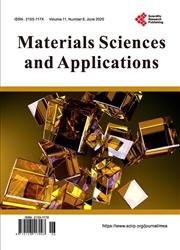Factors Affecting Thermal Shrinkage of Mouthguard Sheet during Thermoforming: Model Shape and Sheet Material Thickness
引用次数: 1
Abstract
The effectiveness and safety of the mouthguard depend on the sheet material thickness. The thickness of the thermoformed mouthguard is affected by the model undercut and the thermal shrinkage that occurs when the ex-truded-molded sheet is reheated. The aim of this study was to clarify the influence of the undercut amount of the model and the thickness of the sheet material on the thermal shrinkage of the extruded sheet. The mouthguard sheet used ethylene-vinyl acetate resin with a thickness of 4.0 mm (4M) and 3.0 mm (3M) and was manufactured by extrusion molding. The working models were three hard gypsum models with the undercut amount on the labial side trimmed to 0˚ (U0), 10˚ (U10), and 20˚ (U20). Mouthguard thickness after vacuum formation was compared between the conditions formed so that the extrusion direction was vertical (condition V) or parallel (condi-tion P) to the model midline. Differences in the reduction rate of the mouthguard thicknesses of the labial and buccal side depending on the sheet extrusion direction, model angle, and sheet material thickness were analyzed by three-way ANOVA and Bonferroni method. The reduction rate of the thickness in condition P was significantly greater than in condition V under all conditions except U0-4M on the labial side and U0-4M and U10-4M on the buccal side. In all models, the reduction rate of the thicknesses was in than in in the same extrusion direction. In 4M and the reduction rate of the thicknesses tended to increase as the amount undercut increased in each extrusion direction. This study suggested that a model a large amount of undercut on the labial side or a thin sheet had a significant effect on the thermal shrinkage of the mouthguard sheet during thermoforming, which leads to the thinning of the mouthguard.影响护齿板热成型热收缩的因素:模型形状和板材厚度
护齿器的有效性和安全性取决于片材的厚度。热成型护口器的厚度受模型下切和再加热时发生的热收缩的影响。本研究的目的是阐明模型的下切量和板材材料的厚度对挤压板材热收缩的影响。护齿片材采用乙烯-醋酸乙烯树脂,厚度分别为4.0 mm (4M)和3.0 mm (3M),采用挤压成型工艺制造。工作模型为3个硬石膏模型,唇侧侧削边量分别为0˚(U0)、10˚(U10)和20˚(U20)。将挤出方向垂直于模型中线(条件V)或平行于模型中线(条件P)两种条件下形成真空后的护齿厚度进行比较。采用三向方差分析和Bonferroni方法分析不同的片材挤压方向、模型角度和片材厚度对唇侧和颊侧护齿厚度减小率的影响。除唇侧U0-4M、颊侧U0-4M和U10-4M外,P组的厚度减少率均显著大于V组。在同一挤压方向上,各模型的减薄率均大于。在4M和各挤压方向上,随着切边量的增加,厚度的减薄率有增大的趋势。本研究表明,在模型热成型过程中,唇侧大量凹边或薄片对护齿板的热收缩有显著影响,从而导致护齿板变薄。
本文章由计算机程序翻译,如有差异,请以英文原文为准。
求助全文
约1分钟内获得全文
求助全文

 求助内容:
求助内容: 应助结果提醒方式:
应助结果提醒方式:


